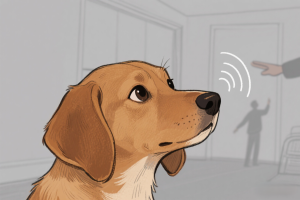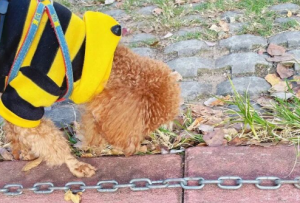You’ve probably heard the phrase “Dogs shouldn’t eat salt” countless times, right? Online, some people claim that if a dog consumes salt, it will shed fur, develop tear stains, suffer kidney damage, and some even insist, “Dogs don’t have sweat glands, so they can’t get rid of salt.” But then, take a look at the dog food you buy—doesn’t the ingredient list include sodium chloride (which is just salt)?So here’s the real question: Can dogs eat salt or not? Actually, this has already been answered. The issue isn’t whether dogs can eat salt—it’s that they need salt.
-
Salt is a “necessity” for dogs
Let’s put the fear of salt aside for a moment and talk facts. The main component of salt is sodium chloride, an essential electrolyte for a dog’s survival. If a dog goes long periods without any salt, its body will send red flags: poor appetite, low energy, lack of water intake, and in severe cases, dehydration or electrolyte imbalance. Some dog owners hear “dogs can’t eat salt” and make their dog’s food bland and tasteless. As a result, the dog may eat irregularly, leaving bowls untouched, barely drinking water. A trip to the vet often reveals the simple truth: not enough salt. So it’s not that dogs can’t touch salt—it’s that they cannot live without it.
-
“Dogs don’t sweat, so they can’t get rid of salt”?
This claim sounds plausible but doesn’t hold up under scrutiny. Yes, humans have sweat glands, but how many days in a year do you actually sweat heavily? Does eating something salty on a “non-sweaty” day instantly poison you? Of course not, and dogs are no different. Dogs primarily excrete excess salt through urine, not sweat, so sweat glands aren’t a major factor. If a dog eats slightly salty food, it will naturally drink more water and urinate more to flush out the extra sodium. Even if it sneaks a salty piece of your chicken dinner, it won’t immediately cause harm. This isn’t permission to feed salty food daily, but it also doesn’t mean a tiny amount of salt is dangerous.
-
“Salt causes fur loss or tear stains”?
Many people blame salt for tear stains and shedding, but in reality, salt is rarely the culprit. Tear stains are usually caused by blocked tear ducts, eyelid abnormalities, dietary allergies, or genetics. Fur loss can result from seasonal changes, skin issues, hormonal imbalances, or poor nutrition. Salt often gets blamed unfairly. If a dog truly consumes too much salt, the immediate symptoms are increased thirst, more drinking, and frequent urination. Factors that affect fur and tear ducts are largely about overall diet, environment, and health, not a little salt.

-
“How much salt is appropriate?”
Salt standards aren’t made up on the spot—they are scientifically determined. Both China and the U.S. have official guidelines for added salt. The China Feed Industry Association mandates that dog food must contain salt, otherwise it is non-compliant. The U.S. NRC also sets standards, even slightly higher, but again, it doesn’t say “these amounts will harm your dog.” The key point: dogs don’t need less salt, they need enough salt to maintain normal bodily functions. That means commercial dog food already contains sufficient salt—you don’t need to add more, and you shouldn’t worry about overfeeding salt.
-
“Can dogs eat slightly salty food?”
Honestly, most owners aren’t worried about dogs eating salty food daily—they worry when dogs occasionally taste human food or nibble on a piece of ham. As long as the dog isn’t eating high-salt meals every day, its body can self-regulate. If it eats something salty, it will drink more water, urinate more, and safely metabolize the excess sodium. A few occasional instances are harmless. The real problem arises with daily high-salt food, constant snacks, and uncontrolled diet habits—that’s when health risks appear.
Dogs aren’t “forbidden to eat salt”, they cannot live without it. The salt already added to commercial dog food is sufficient—you don’t need to worry about adding extra. Occasionally eating something slightly salty? Don’t panic. Make sure your dog drinks plenty of water and gets a little extra walk, and it will self-regulate just fine. Fur loss and tear stains are not caused by salt, so stop blaming it.Raising a dog isn’t as complicated as you might think—don’t let the phrase “dogs can’t eat salt” make you overreact to every little thing. True, scientific feeding isn’t about extreme restriction; it’s about understanding exactly what your dog needs to thrive.





